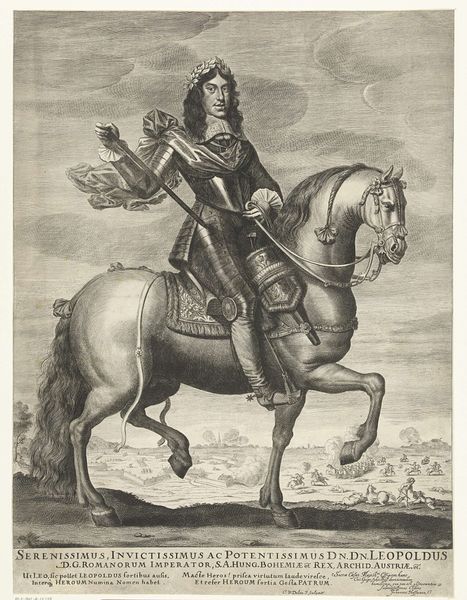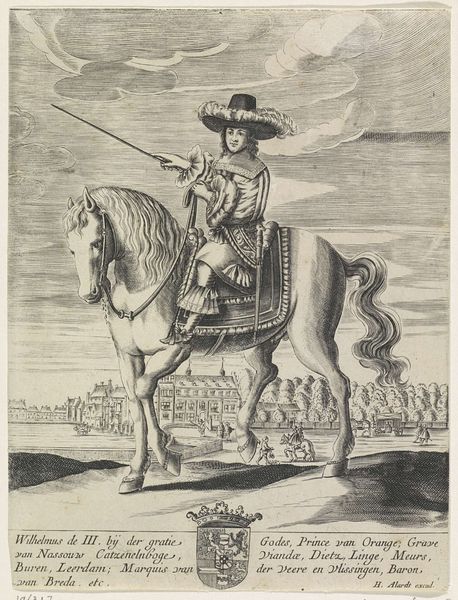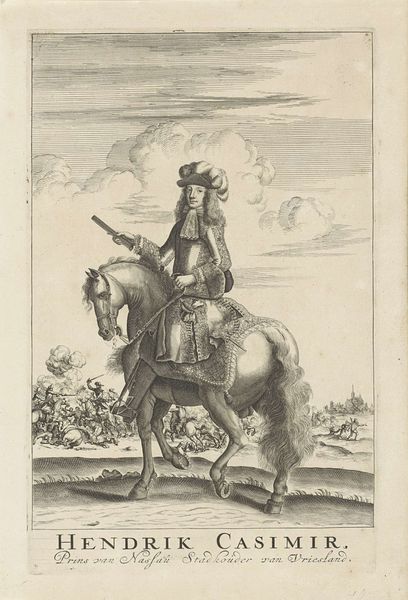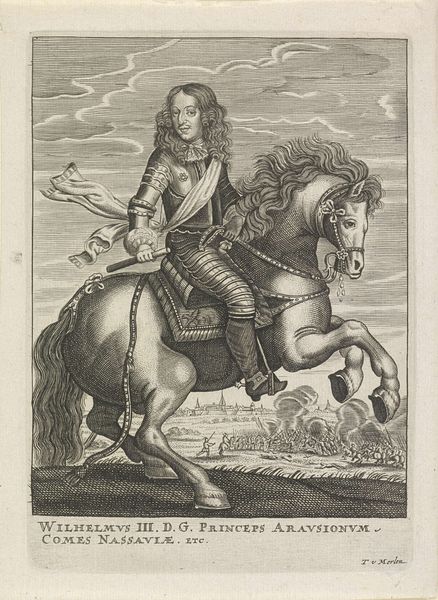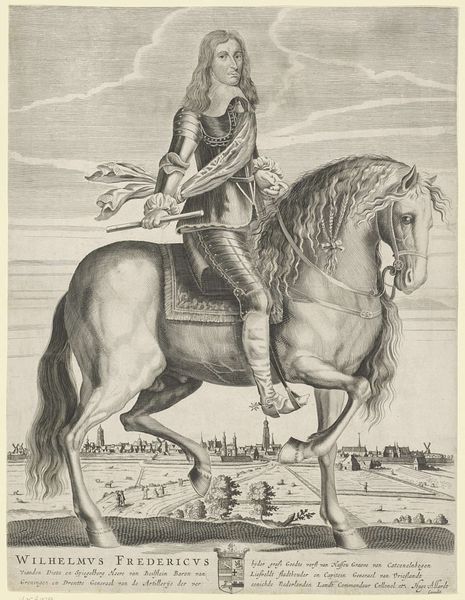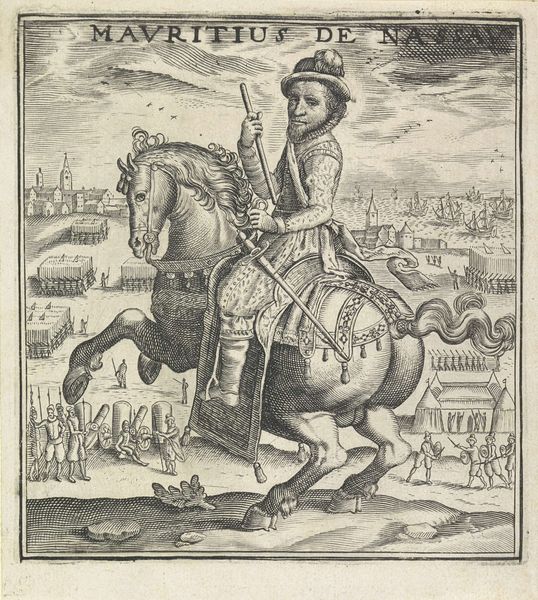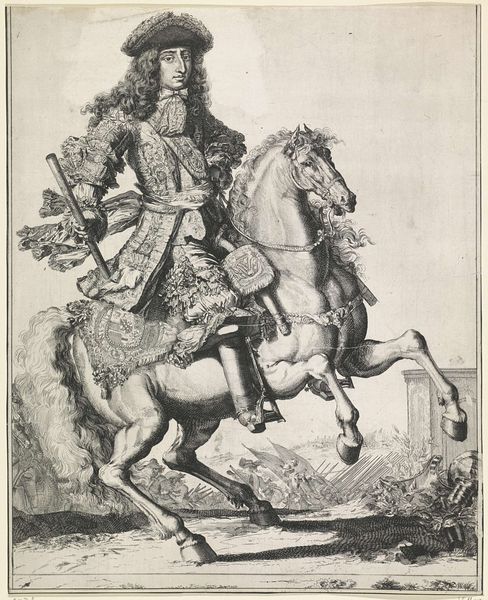
print, engraving
#
portrait
#
baroque
# print
#
old engraving style
#
landscape
#
caricature
#
personal sketchbook
#
history-painting
#
engraving
#
erotic-art
Dimensions: height 524 mm, width 428 mm
Copyright: Rijks Museum: Open Domain
Curator: Looking at this print, my immediate reaction is captured in the detail; I am seeing the individual scratches forming a grandiose picture, the whole emerging from tiny fragments. The labour! Editor: Exactly. This is a print depicting William III, Prince of Orange. It's called "Ruiterportret van Willem III, prins van Oranje," created sometime between 1688 and 1749. What's interesting to me is that it’s not attributed to a specific artist; it's anonymous. And the printmaking process… think of the socio-economic forces that fueled that sort of anonymous craft! Curator: And yet, there’s a tenderness to the caricature, isn't there? A personal sketchbook feel. That awkward little city depicted beyond William’s horse— the way that foliage pops out, inviting curiosity and questioning the authority presented. And his face— his slightly pursed lips as if to question, to doubt and push onward? Is it an official, celebratory portrait, or something more subversive? Editor: The lines themselves suggest something of its social position as commodity, intended for circulation— but perhaps not for consumption by the elites, at least originally. The print medium suggests the rise of middle-class collecting. I also see some very weird decisions. The horse doesn’t quite convince— its anatomy is so questionable. This makes me think it’s perhaps someone lesser at their craft imitating a master. Curator: Perhaps an aspiring printmaker using a preliminary sketch— or someone attempting something on their own— subverting official propaganda? The way William is facing away makes me want to see what’s beyond him. The inscription suggests authority —“By the Grace of God” — but what kind of “grace”? I cannot help but see some wryness here, which leads to reflection of hidden elements behind even traditional symbols and means of expression. Editor: It's those imperfections, those almost naive artistic choices, that root the image in a very specific time, labor, and place. A statement— almost of resistance using available media. Curator: Beautifully said. I'll walk away now and ponder on labor's subtle conversation! Editor: Me too, the conversation of labor and capital.
Comments
No comments
Be the first to comment and join the conversation on the ultimate creative platform.
